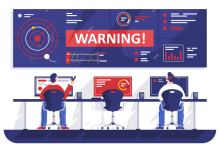
Our annual challenges and priorities survey, as well as our project experience, show that high attrition, absence and adherence issues, and the uphill battle to gain budget approval for additional staff remain pain points for many centers. While technology is not a “white knight” riding in to solve the staffing problems, I’m willing to bet you can identify a lot of contacts that could be handled with less labor.
Self-service is an obvious approach to reduce incoming contacts. Interactive Voice Response (IVR) is the channel most likely to be “owned” by the contact center, yet its pull seems to be ever decreasing as other channels gain more appeal. It may get a new life with a natural language interface if the customer demographic and contact types are well-suited to the voice channel. In addition to self-service, it can be used to gather information and/or perform authentication, savings tens of seconds on agent calls.
Centers may also consider artificial intelligence (AI) or “bots,” as many IVR offerings (especially cloud) are touting this as the new wave. We are still in the early adopter stages with this technology, and the hype train is roaring. If considering this path, probe whether the capabilities are truly “intelligent” or just rely on a set of business rules. Explore how the design, development, and tuning of an IVR will deliver the volume reduction you seek, expanding applications and improving interfaces.
If voice interactions are not your best option, or your alternative channels are on the rise, take a fresh look at your text-based communication (text/SMS, web chat, email, social media, tickets, etc.). While you may first think of them as assisted service through an agent, they may have self-service elements with the right tools and interfaces. Like an IVR, the “smarts” can be business rules or AI, providing answers where it can and routing to an agent only when the system can’t succeed. You might hear them referred to as “Intelligent Virtual Assistants” or IVAs. Look at options that leverage the same AI engine across multiple channels such that one omnichannel bot provides answers and gets smarter off interactions that are speech-based or text-based.
Any initiative to reduce volume should engage other departments as they may be the cause of some contacts, or may own other self-service channels. A mobile app or online capability should be reviewed for additional (or better) self-service, as well as for optimization of channel-crossing into the center. While opportunities vary significantly by vertical in terms of “routine” users and types of transactions, centers across financial, retail, healthcare, transportation, business-to-business, utilities, telecom, high tech, and travel/transportation can probably stir up some improvements. A little integration can go a long way to enable the center to leverage what was already accomplished in an app or portal (including authentication) if a customer seeks assistance through a call, web chat, or text/SMS session, for example.
When you have good mobile and web self-service, boost participation through a targeted effort, helping people sign up to use it, and continue to use it. The center can play a role in this initiative, and desktop tools can help guide agents on when to promote it with a customer who isn’t signed up or using these options. With screen-sharing, the agent can even guide them through successful onboarding or actions.
A tried and true option to reduce volumes is proactive outbound (aka alerting or notification). This application can be offered through a variety of channels (voice, text, email) and can be administered online, via mobile app, or through an agent. Messages can be very specific to the customer and situation, and the timely information they provide can prevent a much more time-consuming inbound interaction.
Keeping in mind first-contact resolution (FCR) prevents subsequent contacts, look at tools to improve FCR if your performance is not where it could be. The set of tools to help are also typically ones that reduce handle time including knowledge base and collaboration. Avoiding an escalation or call back serves the customer and the center well.



